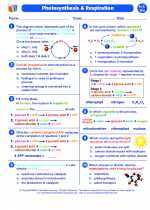Photosphere
The photosphere is the outermost layer of the Sun's atmosphere and is the region that emits the visible light that we see. It is the lowest layer of the solar atmosphere and has a temperature of about 5,500 degrees Celsius. The photosphere is made up of a hot, dense plasma, and it is the region where most of the Sun's energy is emitted as light.
One of the most prominent features of the photosphere is the presence of sunspots, which are temporary dark regions on the surface of the Sun. These sunspots are caused by the Sun's magnetic activity and appear darker because they are cooler than the surrounding areas of the photosphere.
Studying the photosphere is important for understanding the Sun's activity and its impact on space weather, as well as for gaining insights into the fundamental processes that govern stars and their evolution.
Study Guide for the Photosphere
- Structure: Describe the structure of the photosphere, including its temperature, composition, and prominent features such as sunspots.
- Energy Emission: Explain how the photosphere emits energy in the form of visible light and its significance in the context of solar energy production.
- Observation: Discuss the methods and instruments used for observing the photosphere, such as solar telescopes and filters designed for safe solar viewing.
- Impact: Explore the impact of the photosphere's activity on space weather, communication systems, and technological infrastructure on Earth.
- Evolution: Investigate the role of the photosphere in understanding the life cycle and evolution of stars, including the Sun.
Understanding the photosphere is crucial for comprehending the dynamics of the Sun and its influence on the solar system and beyond.
.◂Biology Worksheets and Study Guides High School. Photosynthesis and respiration

 Worksheet/Answer key
Worksheet/Answer key
 Worksheet/Answer key
Worksheet/Answer key
 Worksheet/Answer key
Worksheet/Answer key
 Vocabulary/Answer key
Vocabulary/Answer key
 Vocabulary/Answer key
Vocabulary/Answer key
